
Turkish Interests in Syria and Iraq
Question (R2 QL6): What are near and long term Turkish interests and intentions in Syria and Iraq? What are Turkish interests and intentions with respect to al-Bab? Author | Editor: Astorino-Courtois, A. (NSI, Inc). Despite policy shifts Turkey’s key interests remain the same The SME contributors to this SMA Reach-back write-up argue that the recent […]
Continue Reading
Part 4 Actor Interests and Motivations
SMA CENTCOM Reach-back Reports – Part 4: Regional Actor Interests and Motivations. Author | Editor: SMA Program Office. This is Part 4 of a 9 part series of SMA Reach back responses to questions posed by USCENTCOM. Each report contains responses to multiple questions grouped by theme. At the request of United States Central Command […]
Continue Reading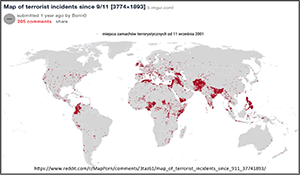
Views of Sunni and Shia Extremism
Question (R2 QL8): How does the U.S./Coalition view Shia extremism? Different from Sunni extremism? How do Sunni communities, Shia communities, MENA countries, and media perceive the U.S./Coalition position on combatting extremists? Author | Editor: Canna, S. (NSI, Inc). How does the U.S./Coalition view Shia extremism? How does the U.S./Coalition view Sunni extremism? Experts who volunteered […]
Continue Reading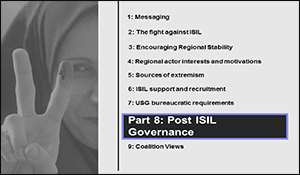
SMA Reachback: Part 8 Post ISIL Governance
SMA CENTCOM Reach-back Reports – Part 8: Post ISIL Governance. Author | Editor: SMA Program Office. This is Part 8 of a 9 part series of SMA Reach back responses to questions posed by USCENTCOM. Each report contains responses to multiple questions grouped by theme. At the request of United States Central Command (USCENTCOM), the […]
Continue Reading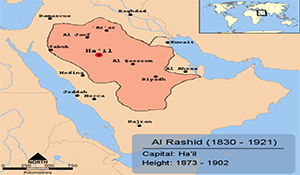
Military Influence in Post-ISIL Levant
Question (R2 QL7): What significance will small military groups, particularly in Northern Syria, have in a post-ISIL Levant? How should CENTCOM best shape or influence these groups? Author | Editor: Reedy, K. (RAND). The primary theme that all of the experts touched upon is that there will be no single unified situation regarding either the […]
Continue Reading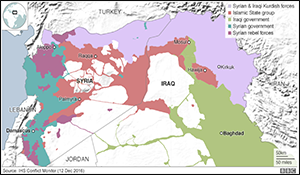
ISIS and Religion and Nation Building in the Middle East
ISIS and Religion and Nation Building in the Middle East. Speaker: Landis, J. (University of Oklahoma’s College of International Studies). Date: January 2017. Joshua Landis is Director of the Center for Middle East Studies and Professor at the University of Oklahoma’s College of International Studies. He writes and manages “SyriaComment.com,” a daily newsletter on Syrian […]
Continue Reading
Part 3 Encourage Regional Stability
SMA CENTCOM Reach-back Reports – Part 3: Encouraging Regional Stability. Author | Editor: SMA Program Office. This is Part 3 of a 9 part series of SMA Reach back responses to questions posed by USCENTCOM. Each report contains responses to multiple questions grouped by theme. At the request of United States Central Command (USCENTCOM), the […]
Continue Reading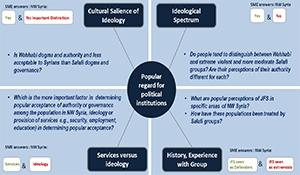
Syrian Reaction to Salafi Institution
Question (R3 QL6): How will the population in northwest Syria react to future Salafist political institutions? Author | Editor: Astorino-Courtois, A. (NSI, Inc). Similar to points made by other contributors to this SMA Reach-back report, Dr. Kathleen Reedy of Rand includes a caveat in her response to the CENTCOM question. Given international pressure to avoid […]
Continue Reading
Discussion with NPS Experts – Jan 2017
SMA Reachback Panel Discussion with Experts from Naval Postgraduate School – Jan 2017. Author | Editor: Nicole (Peterson) Omundson (NSI, Inc.) Speakers were John Arquilla, Ryan Gingeras, Glenn Robinson, and Hy Rothstein of the Naval Postgraduate School. Glenn Robinson: Let me go over the agenda very briefly. As I mentioned yesterday Doc, unfortunately Craig Whiteside […]
Continue ReadingBlack Swans to Defeating ISIL in al-Raqqah
Question (R2 #5): What are potential unanticipated complications or reactions (or “black swans”) with respect to defeating ISIL in al-Raqqah? Author | Editor: Reedy, K. (RAND). Predicting the unanticipated is always a challenge, but contributors have identified a couple of considerations for thinking about both potential complications involving external actors such as Turkey (Yeşilada) and […]
Continue Reading